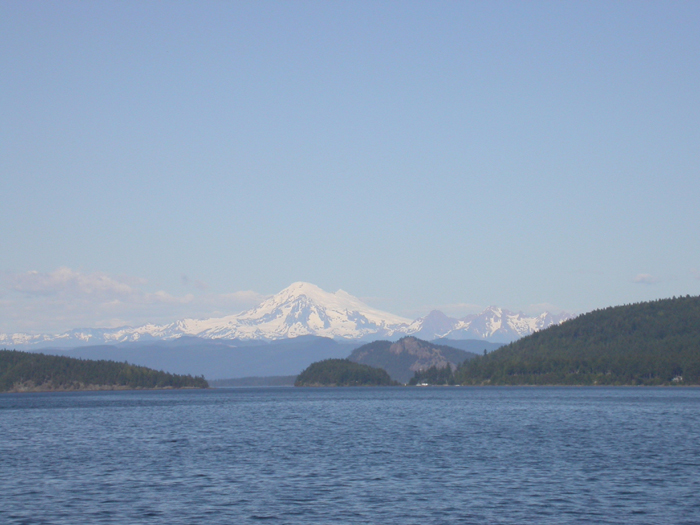
6-16-04: Eric and I decided to go to the San Juans on a long weekend. This is the view of one of the volcanoes – I believe it is Mount Baker but it might be Glacier – from the ferry to the San Juan Islands.

6-16-04: Eric and I decided to go to the San Juans on a long weekend. This is the view of one of the volcanoes – I believe it is Mount Baker but it might be Glacier – from the ferry to the San Juan Islands.
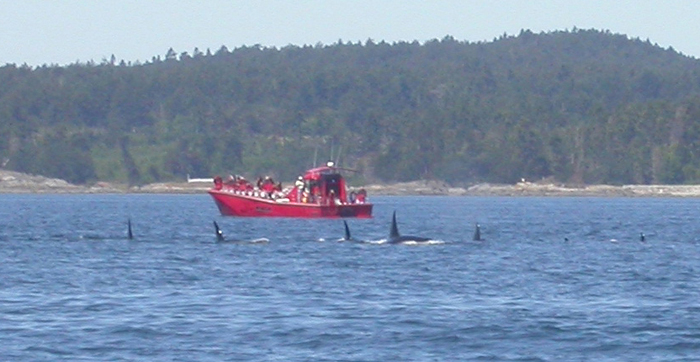
6-16-04: The main purpose of the trip was to go whale
watching
- out on a boat to find the orcas. The method of
finding the whales is rather complicated. There's a radio network
of volunteer and commercial spotters, and some of the commercial
spotters compete with each other so that their boats can claim the
largest number of whale sightings in their advertisements!
Generally by the afternoon trip the whales have been spotted,
though, and the boats just take you out to see them.
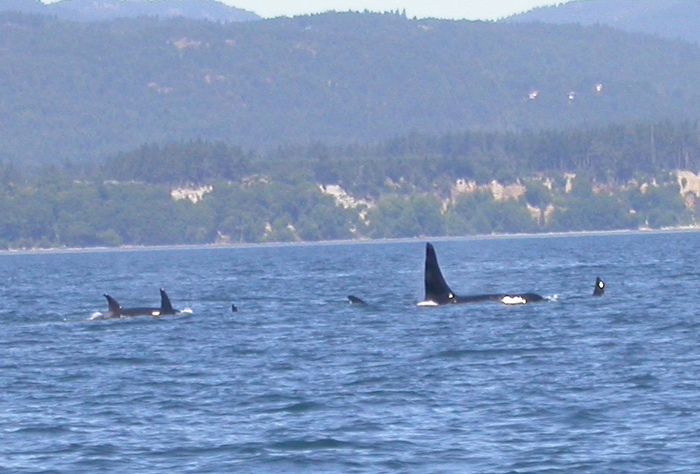
6-16-04: When I had been out whale watching before, the
captain of the boat said, Well, the other boats are going
that way.... but Captain Jim's going this way... and he usually
knows where the whales are going.
My thought was, Who's
Captain Jim, and how do I get on his boat?
It turns out
that Jim is a retired schoolteacher who runs Maya Charters, on a
boat that will hold at most 6 or 7 people. Certainly today, Jim
knew where the whales were.
He is also a tremendous source of information about the whales.
The one with the big fin in the foreground is a male. These
whales are part of J pod, one of three resident pods in Puget
Sound. They pretty much exclusively eat salmon and other marine
fish. Some whales from pods that are not resident to Puget Sound
eat seals rather than fish. Their dietary preference appears to
be cultural
- whales from a fish-eating pod will not
eat seal, and vice versa. When whales from J pod meet with whales
from the other resident pods (K and L pods), a complicated ritual
of whale song, leaping, and display ensues, in which every whale
in the pod touches every whale in the other pod. If non-resident
pods come into the sound, they will pass each other like ships in
the night, without any sign of recognition. Their world is so
different from ours that I don't know if we have any hope of
figuring out how complex they really are, but it certainly seems
that there are depths to be plumbed.
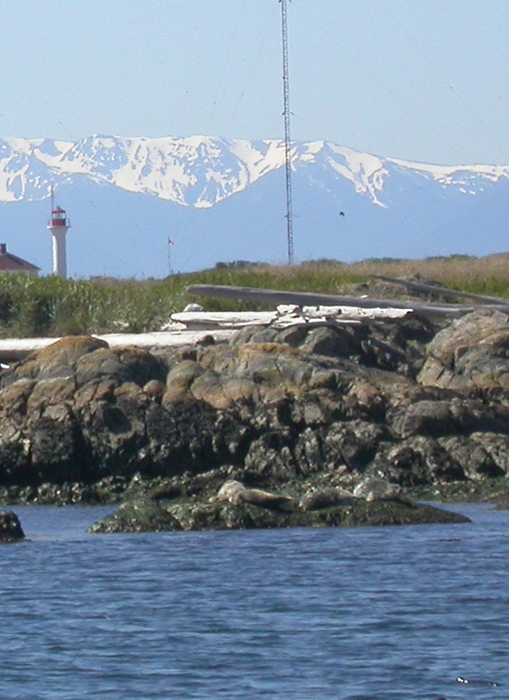
6-16-04: Another advantage of going with Jim is that he doesn't just make a beeline for the whales and back. We took our time on the return trip, and he pointed out cormorant nests, white-sided dolphins, and these seals basking on the rocks. Seals prefer to hang out on small rocks like these, rather than the larger islands. Presumably, they get less harassment there.
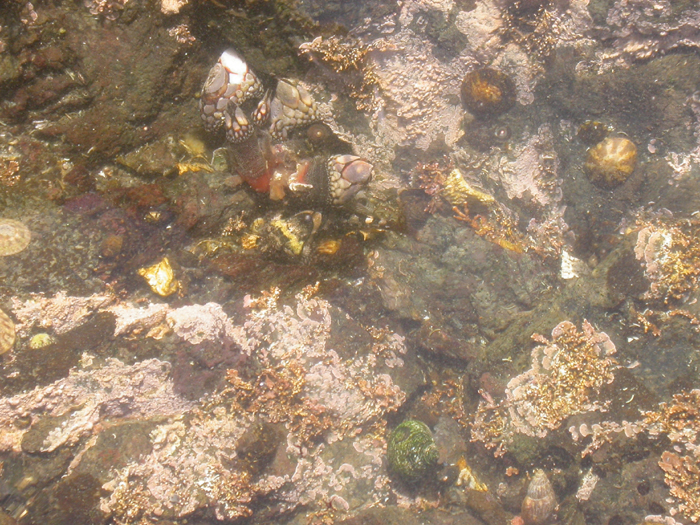
6-16-04: Back on shore, we spent a while looking into tidepools. It is hard to tell in a still picture, but the sort of scaly-looking gray, white, and red thing in the upper left quadrant of the photo is a crab with very large claws.
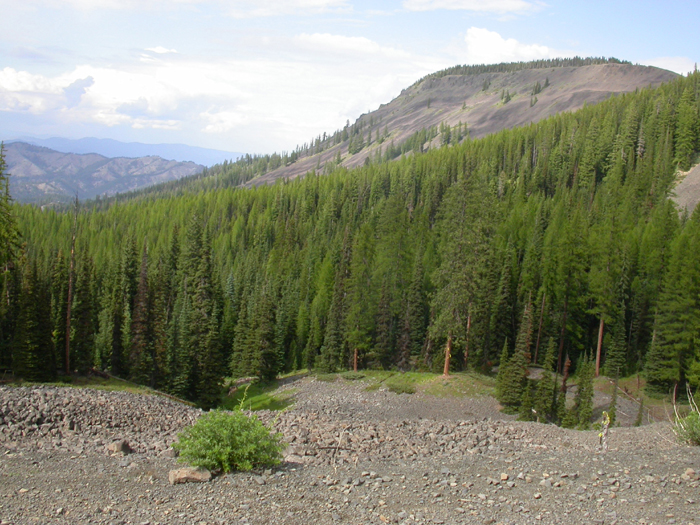
7-4-04: July 4th weekend we took the drive out to Haney Meadows. The road to get to Haney is one of those winding gravel mountain roads. On this particular stretch, one edge of the road is a nearly vertical mountainside going up... and the other sort of graduates from gravel into rocks as it takes a very steep downward turn. It is hard to capture just how precarious this area feels with a camera... and given that there isn't really room for two cars to pass each other on this stretch, you don't really want to stop for an extended photo shoot.
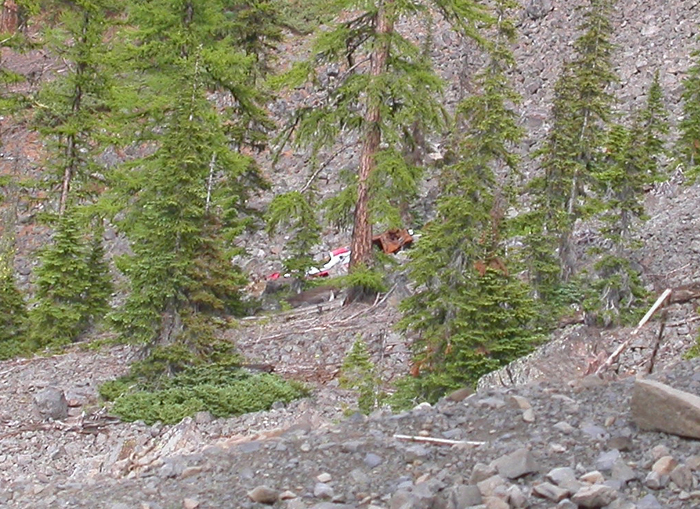
7-4-04: Especially given the unnerving spectre of this wrecked car partway down the hill. Close examination makes it appear that it was creatively abandoned rather than lost in a terrible accident, but its an odd thing to see when driving by, anyway.
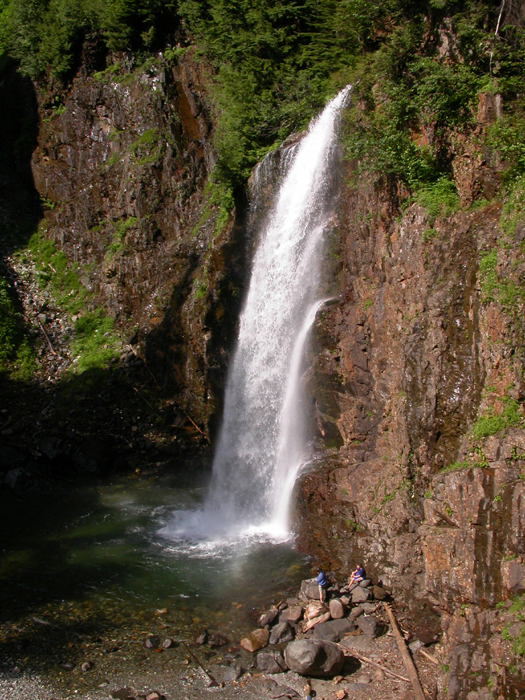
7-11-04: Franklin Falls is the destination of another short trail leaving from the Denny Creek area. It is less than a mile walk to this wonderful little year-round waterfall. The people on the rocks below can give you a sense of scale for these falls.
In order to see the next set of photos, move the mouse so that the arrow on the screen moves into the blue field that says next page
. The arrow might change into a hand when you do this. Once it's inside the blue field, press the left button on the top of the mouse.
 On to next photos
On to next photos